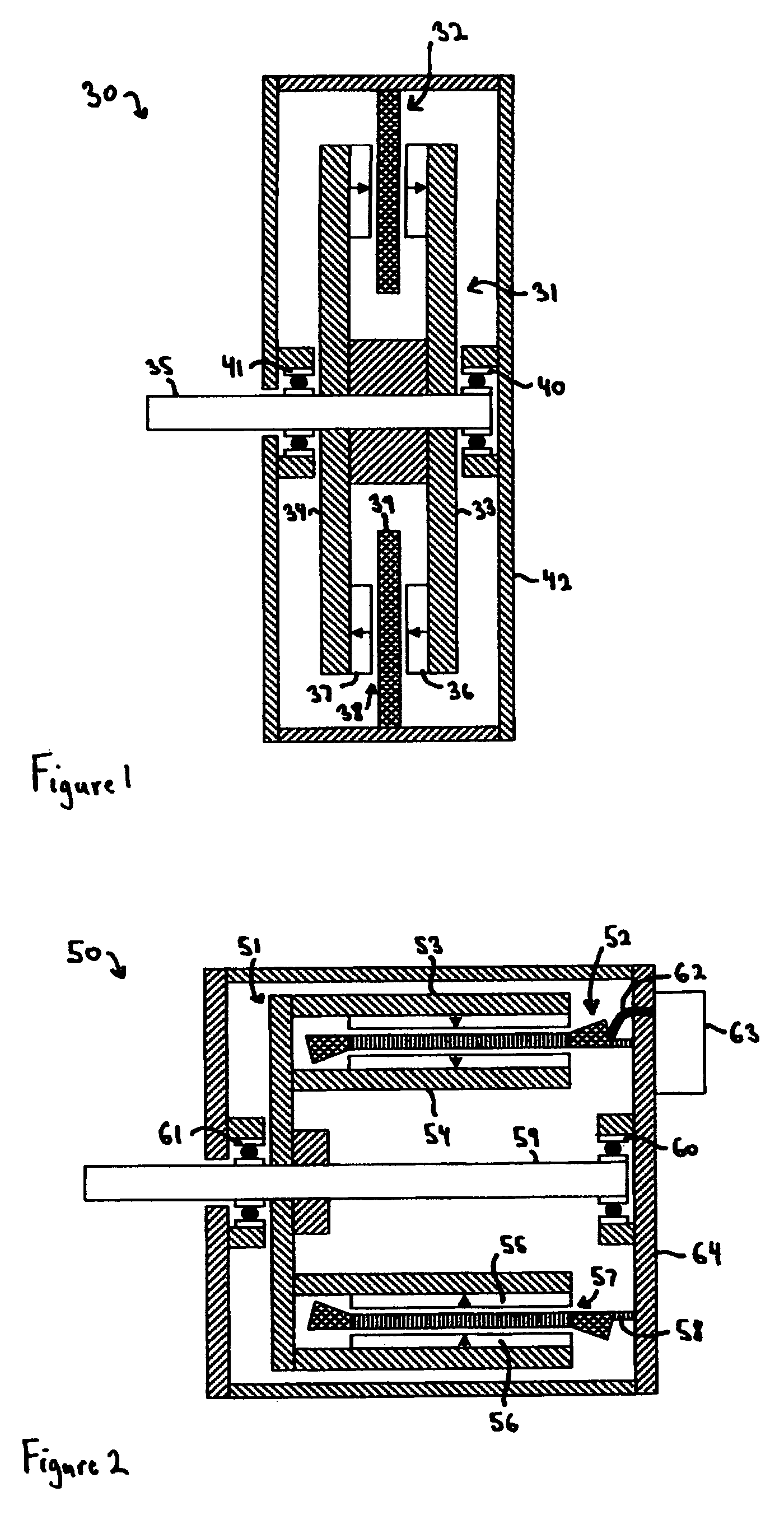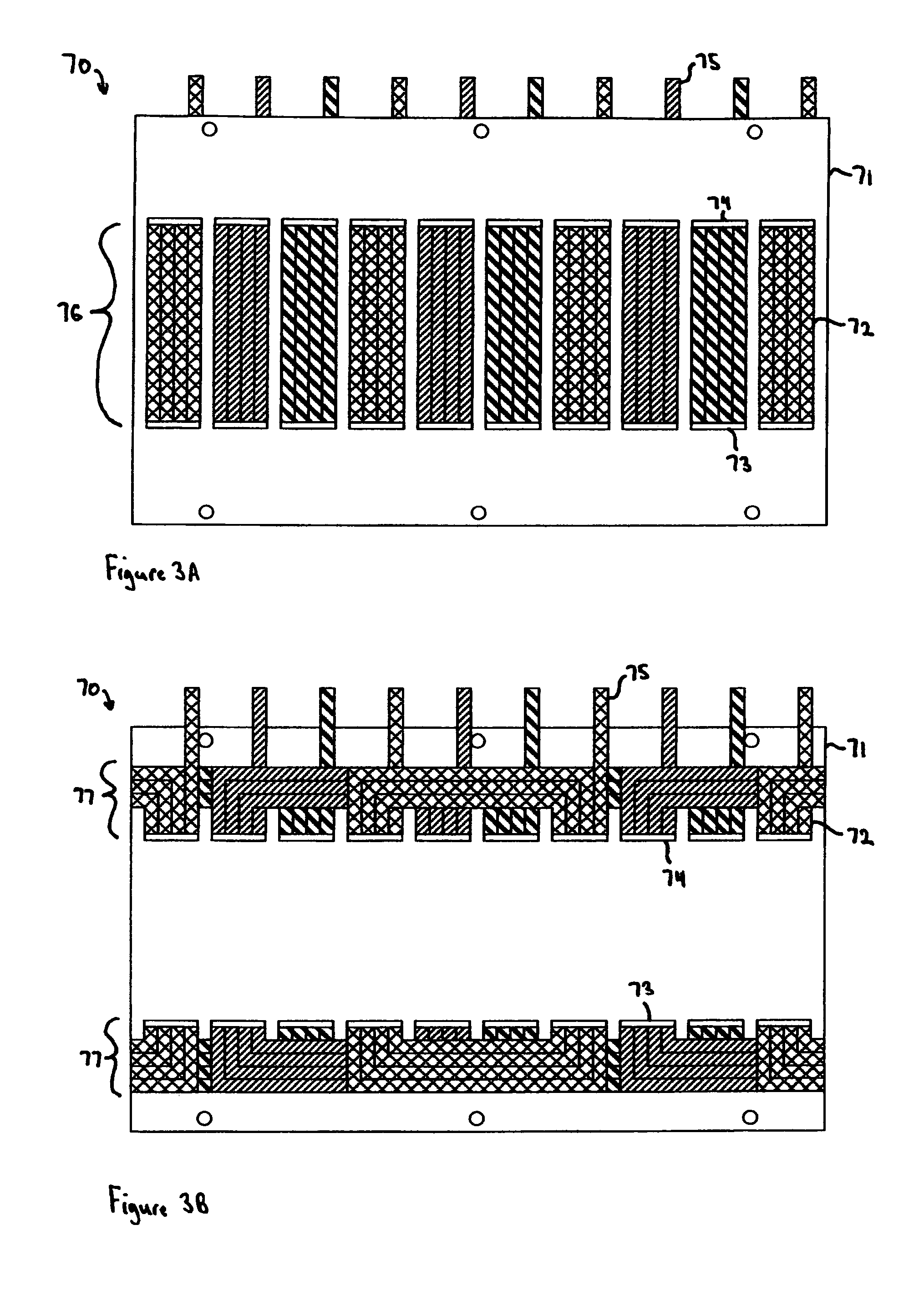High performance air core motor-generator winding
a technology of air core motor and winding, which is applied in the direction of windings, magnetic circuit rotating parts, magnetic circuit shapes/forms/construction, etc., can solve the problems of armature failure, armature failure, and new larger air core motors for industrial applications that are faced with unpredictable armature failures, etc., to achieve high performance, longer and more reliable operating life, and high winding density
- Summary
- Abstract
- Description
- Claims
- Application Information
AI Technical Summary
Benefits of technology
Problems solved by technology
Method used
Image
Examples
Embodiment Construction
[0031]Turning to the drawings, wherein like reference characters designate identical or corresponding parts, FIG. 1 shows an axial gap double rotating air core motor-generator 30 having a rotor 31 mounted for rotation relative to a stationary stator 32. The rotor 31 includes two spaced apart discs 33, 34 that form therebetween an armature airgap 38. Magnetic poles 36, 37 drive magnetic flux across a magnetic airgap between the pairs of magnets. The magnetic poles 36, 37 are shown as circumferential arrays of alternating, axial polarity, permanent magnets and are located on both discs 33, 34. However, magnets can alternatively be located only on one disc 33, 34 and magnetic poles can also be made of steelprotrusions on the discs 33, 34, so long as a source of magnetic flux is provided to drive magnetic flux from the poles 36, 37 to traverse the magnetic airgap. An air core armature 39 is attached and supported at its outer diameter by a housing 42, and extends into the armature airga...
PUM
 Login to View More
Login to View More Abstract
Description
Claims
Application Information
 Login to View More
Login to View More - R&D
- Intellectual Property
- Life Sciences
- Materials
- Tech Scout
- Unparalleled Data Quality
- Higher Quality Content
- 60% Fewer Hallucinations
Browse by: Latest US Patents, China's latest patents, Technical Efficacy Thesaurus, Application Domain, Technology Topic, Popular Technical Reports.
© 2025 PatSnap. All rights reserved.Legal|Privacy policy|Modern Slavery Act Transparency Statement|Sitemap|About US| Contact US: help@patsnap.com



